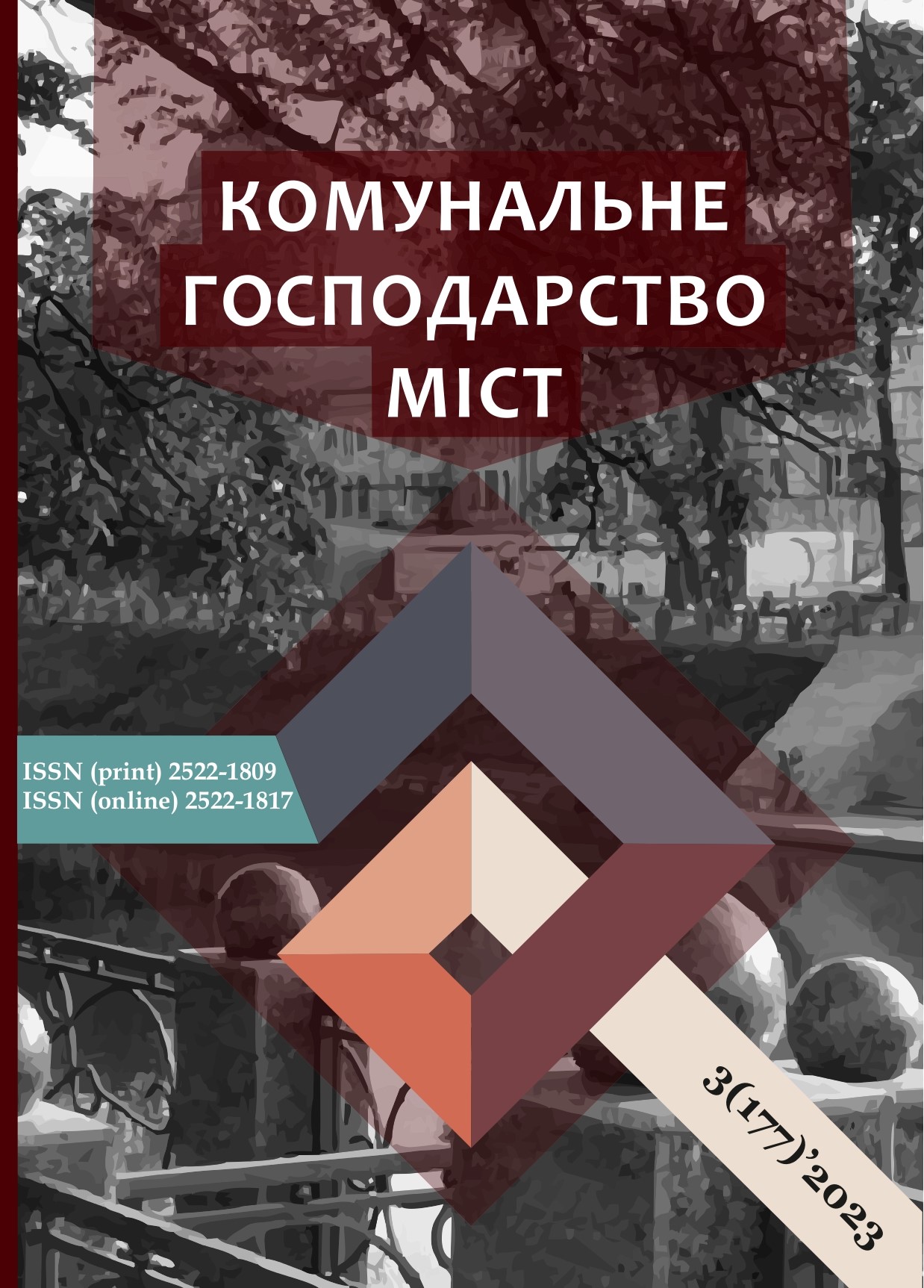EVALUATION OF ACCURACY OF DIGITAL TERRAIN MODELING METHODS BASED ON SPATIAL INTERPOLATION (Part 2)
DOI:
https://doi.org/10.33042/2522-1809-2023-3-177-80-84Keywords:
digital elevation model, construction methods, spatial interpolation, geographic information system, SurferAbstract
Digital terrain model (DTM) is an integral part of many geodetic works. It allows accurately reproducing the earth's surface in a digital form with varying levels of detail. One of the most significant problems in creating a DTM is the accuracy of reflecting the relief.
In the first part of the work, an analysis of methods that can more detailed reflect the relief was already conducted. For these purposes, the Surfer geoinformation package was selected, which offers a considerable number of methods based on the spatial interpolation algorithm. Although these methods have represented the same area with high detail, there is still a need to assess the accuracy of each method.
The purpose of this article is to assess the accuracy of methods for constructing a digital terrain model based on spatial interpolation. Since model accuracy is a crucial factor for many geodetic works, it is necessary to determine which methods are the most accurate and meet the requirements of different purposes of use. The accuracy assessment of methods will improve the efficiency of geodetic works and avoid errors and additional costs.
In the Surfer program, after constructing the DTM with each method, a report can be obtained containing the input values of points and the values obtained after interpolation with each method. This report is very useful for assessing the accuracy of each method since it allows understanding how well the model reflects the real relief. To assess the accuracy of each method, control points of the spatial variable Z were taken, and the values in these points were interpolated for each method. This assessment makes it possible to obtain a numerical characteristic of accuracy for each method and compare them with each other.
Based on the analysis conducted, it can be concluded that problematic areas were identified on a fragment of a topographic map, where there were insufficient input data for accurate interpolation. The result is not accurate and could be better with input data obtained from geodetic instruments and technologies such as GPS, lidar, etc.
The "Natural Neighbor" method performed the best in reproducing the digital elevation model on this hilly terrain. The application of the "Kriging," "Triangulation with Linear Interpolation," "Modified Shepard's Method," and "Radial Basic Function" methods provided fairly accurate interpolation. However, the "Minimum Curvature" method was found to be ineffective in hilly terrain as it did not provide accurate interpolation.
After conducting an accuracy assessment, it can be concluded that high-quality input data is an extremely important element in achieving more accurate results when creating a digital elevation model.
References
Burshtynska Kh., Dorozhynskyi O., Zazuliak P., Zaets O (2003). Tsyfrove modeliuvannia reliiefu z vykorystanniam paketu Surfer ta heoinformatsiinoi systemy ArcGis. Heodeziia, kartohrafiia i aerofotoznimannia. 63, 196-200. [in Ukrainian]
Burshtinska, H. V., Zayats, O. S. (2002). Doslidzhennya tochnosti pobudovi tsifrovih modeley relefu na osnovi kartografichnih danih. Visnik geodeziyi ta kartografyi, 2, 26–31. [in Ukrainian]
Bishop T.F. A., Minasny B. (2005). Digital Soil-Terrain Modelling: The Predictive Potential and Uncertainty. In: Grunwald. S. (Ed.), Environmental Soil-Landscape Modeling: Geographic Information Technologies and Pedometrics. CRC Press, Boca Raton, Florida, 185-213.
Mitasova, H., Mitas, L., Brown, W. M., Gerdes, D. P., Kosinovsky, L., & Baker, T. (1995). Modeling spatially and temporally distributed phenomena: New methods and tools for GRASS GIS. International Journal of Geographical Information Systems, 9(4), 433-446. https://doi.org/10.1080/02693799508902048
Ostrovskyi, A. V. (2014). Perspektyvy vykorystannia suchasnykh heodezychnykh tekhnolohii u vyrishenni zadach vertykalnoho planuvannia. Nauk.-tekhn. zbirnyk Mistobuduvannia ta terytorialne planuvannia, 53, 374-382. [in Ukrainian]
Schultz, R. V., & Ostrovskyi, A. V. (2016). Investigation of residual deviations distribution using various approaches to digital terrain modeling. Scientific Journal «ScienceRise» 1/2 (18), 44-52. DOI: 10.15587/2313-8416.2016.58561 [in Ukrainian]
Zatserkovnyi V.I., Burachek V.G., Zhelezniak O.O., Tereshchenko A.O. (2017). Geographic Information Systems and Databases. Nizhyn. [in Ukrainian]
Svitlychnyi O.O. & Plotnytskyi S.V. (2006). Fundamentals of geoinformatics. VTD «University Book», Sumy. [in Ukrainian]
Pazdriу I., Bilinskіy Yu. (2006). Use of geoinformatic systems for representation of earth surface relief. Visnyk of the Lviv University. Series geography, 33, 301-309. DOI: http://dx.doi.org/10.30970/vgg.2006.33.2700
Burshtinska, H. V. (2001). Porivnyalniy analiz pobudovi tsifrovih modeley relefu z vikoristannyam aproksimatsiynih funktsiy. Geodeziya, kartografiya i aerofotoznimannya, 61, 137-148.
Surfer. User's Guide: Contouring and 3D Surface Mapping for Scientists and Engineers. Golden Software, LLC.
Downloads
Published
How to Cite
Issue
Section
License
The authors who publish in this collection agree with the following terms:
• The authors reserve the right to authorship of their work and give the magazine the right to first publish this work under the terms of license CC BY-NC-ND 4.0 (with the Designation of Authorship - Non-Commercial - Without Derivatives 4.0 International), which allows others to freely distribute the published work with a mandatory reference to the authors of the original work and the first publication of the work in this magazine.
• Authors have the right to make independent extra-exclusive work agreements in the form in which they were published by this magazine (for example, posting work in an electronic repository of an institution or publishing as part of a monograph), provided that the link to the first publication of the work in this journal is maintained. .
• Journal policy allows and encourages the publication of manuscripts on the Internet (for example, in institutions' repositories or on personal websites), both before the publication of this manuscript and during its editorial work, as it contributes to the emergence of productive scientific discussion and positively affects the efficiency and dynamics of the citation of the published work (see The Effect of Open Access).

